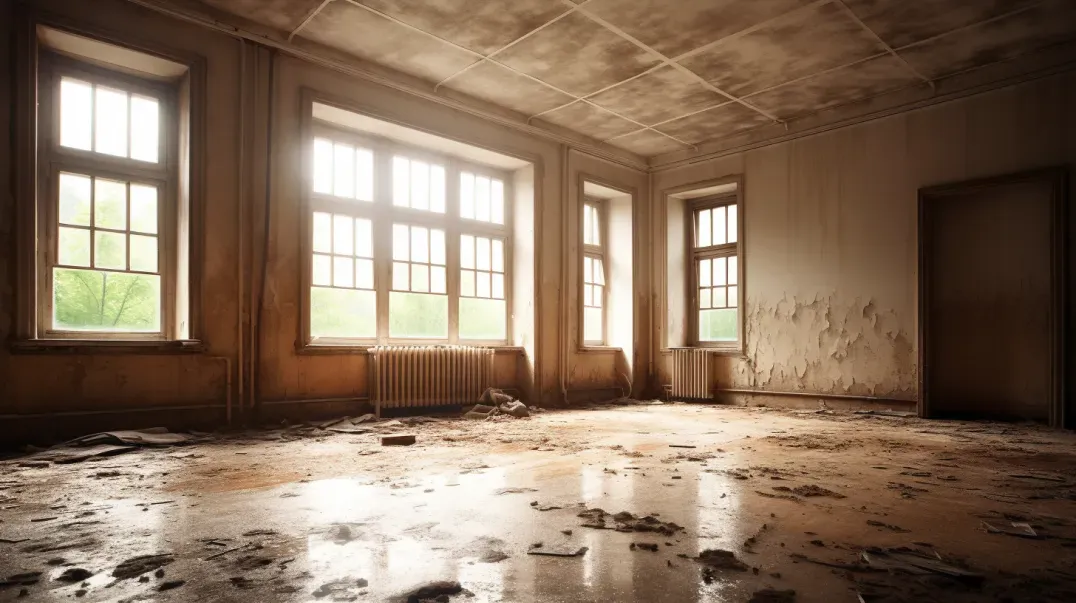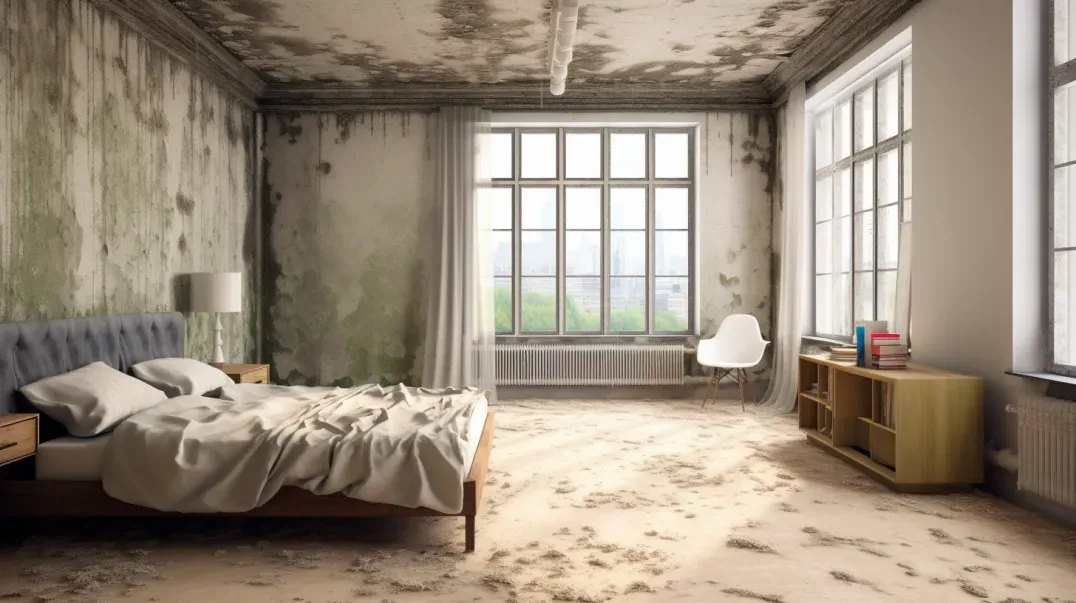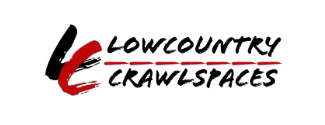Mold Prevention in Commercial Buildings
In the realm of commercial property management, the health and safety of the building's occupants are paramount. Among the myriad challenges faced by facility managers, mold prevention stands out as a critical concern. Mold, a pervasive and persistent issue, can significantly impact indoor air quality, structural integrity, and ultimately, the bottom line of any business. This blog delves into the crucial importance of mold prevention in commercial settings, highlighting the potential risks and ramifications of mold growth on health, property, and profitability.
Mold growth in commercial environments, such as office buildings, retail spaces, and industrial facilities, not only poses serious health risks to employees, customers, and tenants but also can lead to substantial financial losses through damage to the property and inventory, legal liabilities, and diminished property values. Moreover, the presence of mold can tarnish a business's reputation, affecting customer trust and employee satisfaction.
Understanding the stakes, this blog aims to equip property managers, business owners, and facility maintenance teams with the knowledge and strategies necessary to effectively combat mold. By emphasizing preventive measures, regular maintenance, and swift action at the first signs of mold, businesses can safeguard their premises, protect their occupants, and ensure operational continuity.
Join us as we explore the multifaceted approach to mold prevention in commercial settings, offering insights into identification, mitigation, and long-term prevention strategies. Our goal is to provide a comprehensive resource that underscores the importance of a proactive stance on mold prevention, ensuring a healthy, safe, and thriving commercial environment.
Understanding Mold in Commercial Environments
Mold in commercial environments is a significant concern that can affect not only the structural integrity of buildings but also the health of occupants and the overall operation of businesses. Understanding the common causes of mold and its potential impact on businesses is crucial for effective prevention and management.
Common Causes of Mold in Commercial Buildings
Mold growth is facilitated by moisture and organic materials, conditions that are often present in commercial buildings. Here are some typical sources of mold in these settings:
- HVAC Systems: Improperly maintained HVAC systems can accumulate moisture and organic debris, providing an ideal environment for mold growth. Regular maintenance and cleaning of these systems are essential to prevent mold.
- Large Plumbing Networks: Commercial buildings often have extensive plumbing networks. Leaks or condensation within these systems can create persistent dampness, encouraging mold growth in hidden areas.
- Roof and Window Leaks: Water intrusion through damaged roofs or leaking windows can lead to mold problems, especially if the moisture remains undetected or unaddressed for extended periods.
- Flooding and Water Damage: Events like floods or significant water leaks can saturate building materials, making them prone to mold if not promptly and properly dried out.
Identifying and addressing these common sources of moisture can significantly reduce the risk of mold growth in commercial environments.
The Impact of Mold on Businesses
The presence of mold in commercial settings can have far-reaching implications:
- Health Implications for Employees: Mold exposure can lead to various health issues, including allergic reactions, asthma attacks, and other respiratory conditions. This can result in increased sick days, decreased productivity, and potential legal liabilities for the business.
- Business Interruptions: Remediation efforts to remove mold can disrupt business operations, leading to temporary closures or reduced operational capacity. This can affect customer satisfaction and lead to financial losses.
- Reputation Damage: Public knowledge of a mold problem can harm a business's reputation, making it difficult to retain and attract customers and employees.
Understanding these impacts underscores the importance of proactive mold prevention and management strategies in commercial buildings to protect both health and business interests.
Key Strategies for Mold Prevention
Preventing mold growth in commercial environments is essential for maintaining a healthy indoor air quality and protecting the building's structural integrity. Implementing key strategies for mold prevention can save businesses from potential health hazards and financial losses. Two fundamental approaches are regular building inspections and effective moisture control.
Regular Building Inspections
Routine inspections play a crucial role in identifying potential mold issues before they escalate into larger problems. Here’s why they are important:
- Early Detection: Regularly inspecting areas prone to moisture accumulation, such as basements, bathrooms, kitchens, and around HVAC systems, can help detect mold growth early.
- Preventive Maintenance: Inspections can reveal sources of moisture, such as leaks or condensation, that if left unaddressed, could lead to mold growth. Fixing these issues promptly can prevent mold from developing.
- Scheduled Inspections: Establishing a routine inspection schedule ensures that potential mold and moisture issues are systematically identified and addressed. This should include checking roofing, plumbing, and drainage systems to ensure they are functioning correctly and free of leaks.
Adopting a proactive approach to building inspections can significantly reduce the risk of mold growth and its associated health and financial impacts.
Effective Moisture Control
Controlling moisture is critical in preventing mold growth in large buildings. Effective moisture control strategies include:
- Proper Ventilation: Ensure that areas prone to high humidity, such as bathrooms, kitchens, and laundry facilities, are well-ventilated to the outside to reduce moisture levels.
- Dehumidification: In areas where high humidity is a constant issue, use dehumidifiers to maintain indoor humidity levels below 60%, as recommended by health experts.
- Immediate Drying: Promptly address any water damage from leaks, spills, or flooding by drying the affected areas within 24 to 48 hours to prevent mold growth.
- Building Design and Maintenance: Design and maintain buildings with moisture control in mind. This includes having adequate drainage systems, maintaining gutters and downspouts, and ensuring that the ground slopes away from the building foundation to prevent water accumulation.
Implementing these moisture control strategies can create an environment that is less conducive to mold growth, safeguarding the health of building occupants and the integrity of the property.
HVAC Systems and Mold Prevention
HVAC (Heating, Ventilation, and Air Conditioning) systems play a pivotal role in maintaining a comfortable and healthy indoor environment. However, without proper maintenance, these systems can become breeding grounds for mold, distributing spores throughout a building. Understanding how to leverage HVAC systems for mold prevention through regular maintenance and air quality management is crucial for facility managers and property owners.
Maintenance of HVAC Systems
Regular maintenance of HVAC systems is essential to prevent mold growth and ensure the system operates efficiently. Here’s how to implement an effective maintenance schedule:
- Routine Inspections: Schedule regular inspections of the HVAC system to check for signs of moisture accumulation, leaks, or condensation, particularly in drip pans, air handlers, and ductwork.
- Cleaning and Servicing: Regularly clean and service all parts of the HVAC system, including coils and drain pans, to prevent dust and debris accumulation, which can absorb moisture and facilitate mold growth.
- Filter Replacement: Replace HVAC filters according to the manufacturer's recommendations or more frequently in high-dust environments. High-efficiency particulate air (HEPA) filters can be particularly effective in trapping mold spores before they circulate through the building.
- Ductwork Inspection and Cleaning: Ensure that ductwork is inspected for signs of mold or moisture and cleaned as necessary. Sealing ducts can also prevent moisture from entering the system and mold from spreading.
Implementing a regular maintenance schedule for HVAC systems not only prevents mold growth but also enhances the overall air quality and efficiency of the system.
Air Quality Management
Managing air quality is a critical component of mold prevention, with HVAC systems playing a central role:
- Proper Filtration: Use high-quality filters capable of capturing mold spores from the air. Regularly check and replace filters to maintain optimal air quality.
- Humidity Control: Maintain indoor humidity levels between 30% and 50% to minimize the risk of mold growth. HVAC systems equipped with humidity control features can automatically adjust conditions to stay within this range.
- Ventilation: Ensure adequate ventilation to reduce moisture levels and prevent the accumulation of mold spores. Use exhaust fans in high-moisture areas and consider integrating fresh air intake into the HVAC system.
- Air Purification: Consider using air purifiers with HEPA filters in areas prone to mold growth or where air quality is a concern. These can complement the HVAC system's filtration capability.
By focusing on air quality management through proper HVAC maintenance and operation, commercial buildings can significantly reduce the risk of mold growth, creating a safer and healthier environment for occupants.
Cleaning and Maintenance Protocols
Maintaining a clean and dry environment is crucial in preventing mold growth in commercial settings. Effective cleaning and maintenance protocols not only contribute to the overall health and safety of the environment but also play a significant role in mold prevention. Establishing regular cleaning routines and knowing how to respond to water incidents are key components of these protocols.
Regular Cleaning Routines
An effective cleaning protocol is the first line of defense against mold. Here’s how to establish one:
- Identify High-Risk Areas: Focus on areas prone to moisture, such as bathrooms, kitchens, and basements. These areas require more frequent and thorough cleaning.
- Use Mold-Inhibiting Products: For areas susceptible to mold, consider using cleaning products with mold inhibitors. However, ensure these products are safe and suitable for the surfaces being cleaned.
- Dry Wet Areas Immediately: Any spills or wet areas should be dried within 24-48 hours. Regularly check for condensation or moisture accumulation and address it promptly.
- Maintain Clean HVAC Systems: As part of the cleaning routine, ensure that HVAC systems are inspected and filters are changed regularly to prevent mold spores from circulating.
By adhering to these practices, businesses can significantly reduce the likelihood of mold growth, ensuring a healthier environment for employees and customers.
Responding to Water Incidents
Immediate and effective response to water incidents, such as leaks or flooding, is critical in preventing mold growth. Here’s what to do:
- Stop the Water Source: First, identify and stop the source of water. This may involve turning off the main water supply or fixing a leak.
- Remove Water-Damaged Items: Quickly remove any water-damaged items from the area. This includes carpets, furniture, and any other materials that can harbor mold.
- Dry the Affected Area: Use fans, dehumidifiers, and natural ventilation to dry out the affected area thoroughly. The goal is to dry the area as quickly as possible to prevent mold from taking hold.
- Clean and Disinfect: Once the area is dry, clean and disinfect all affected surfaces. This helps kill any mold spores that may have started to grow.
- Monitor for Mold Growth: After addressing the immediate water incident, continue to monitor the area for signs of mold growth. If mold appears, it may require professional remediation.
Prompt action in response to water incidents can prevent the conditions mold needs to grow, saving time and resources in the long run.
Employee Education and Awareness
Creating a healthy and safe work environment requires more than just regular maintenance and cleaning protocols; it necessitates a culture of awareness and proactive behavior among all employees. Educating staff on mold prevention and establishing a clear reporting system for mold issues are critical steps in ensuring a comprehensive approach to mold management in the workplace.
Training Staff on Mold Prevention
Empowering employees with knowledge about mold prevention and identification is essential for early detection and response. Here’s how to implement effective training:
- Develop Comprehensive Training Programs: Create training sessions that cover the basics of mold growth, its health risks, and the conditions that promote its presence. Include information on how to identify mold and distinguish it from common dirt or grime.
- Highlight Prevention Strategies: Educate employees on practical mold prevention strategies, such as proper ventilation, moisture control, and the importance of immediate spill cleanup.
- Use Real-Life Scenarios: Incorporate scenarios or case studies that are relevant to your specific workplace setting, helping employees understand their role in preventing mold.
- Regular Updates and Refresher Courses: Mold prevention training should not be a one-time event. Provide regular updates and refresher courses to keep employees informed about new prevention strategies and to reinforce the importance of mold awareness.
Creating a Reporting System
A well-defined system for reporting potential mold issues encourages prompt action and can prevent small problems from becoming major infestations. Here’s how to establish an effective reporting system:
- Clear Reporting Channels: Designate specific individuals or departments as points of contact for reporting mold concerns. Ensure that all employees know how to reach out to these contacts.
- Encourage Open Communication: Foster an environment where employees feel comfortable reporting potential mold issues without fear of reprisal. Emphasize that their vigilance is valued and critical for workplace safety.
- Provide Feedback: When employees report potential mold issues, keep them informed about the steps being taken to address the problem. This feedback loop can encourage continued participation and vigilance.
- Document and Review Reports: Maintain records of all mold reports and the actions taken in response. Regularly review these reports to identify patterns or areas in need of additional attention.
By educating employees on mold prevention and creating a structured reporting system, businesses can leverage the collective effort of their workforce to maintain a mold-free environment, ensuring the health and safety of all occupants.
FAQs
Contact Lowcountry Crawlspaces Today!
Lowcountry Crawlspaces will do everything we can to ensure your experience with us is excellent.
Request A FREE Estimate
CHECKOUT RECENT POST



Schedule Your FREE Crawl Space Evaluation Today
There Is No Crawl Space Job We Can’t Fix!




